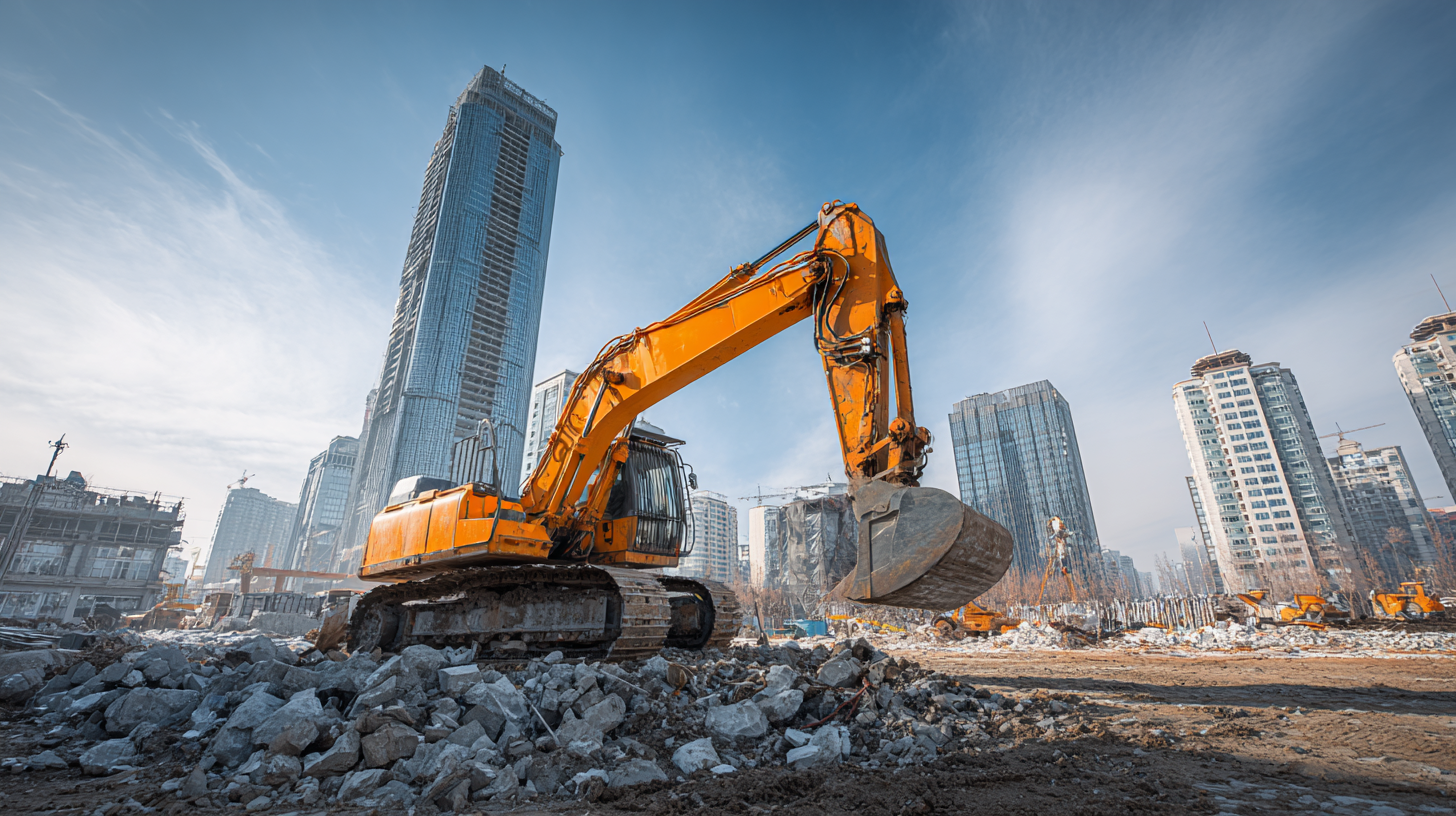Comparative Analysis of Civil Engineering Machines Efficiency in Modern Construction Projects
In the rapidly evolving landscape of modern construction, the efficiency of civil engineering machines plays a pivotal role in determining project outcomes. As the demand for quicker, more sustainable building solutions intensifies, understanding the comparative effectiveness of these machines becomes crucial. This blog will delve into the top civil engineering machines utilized in contemporary construction projects, exploring their operational efficiencies, technological advancements, and the impact they have on productivity. By analyzing various machines through a lens of performance metrics, we aim to provide insights that can guide industry professionals in selecting the right equipment for their specific needs. Ultimately, this discussion not only highlights the importance of machinery in civil engineering but also underscores the significant influence of innovation on the future of construction practices.

Comparative Efficiency Metrics of Excavators in Urban Construction Projects
In urban construction projects, excavators play a pivotal role in enhancing operational efficiency. A detailed comparative analysis reveals that modern excavators are equipped with advanced technologies that significantly boost their performance metrics. For instance, the integration of telematics systems allows for real-time monitoring of machine productivity, leading to optimized work schedules and reduced downtime. These metrics highlight the importance of selecting the right excavator based on the specific demands of the urban site, as efficiency can vary dramatically depending on the machine's capabilities.
Moreover, assessing the efficiency of excavators involves examining various factors such as fuel consumption, digging depth, and cycle times. Recent studies indicate that hybrid and electric excavators are increasingly favored for their lower environmental impact and fuel efficiency, which is crucial in densely populated urban areas. By employing performance-based evaluations, construction managers can make informed decisions on equipment selection, ultimately improving project timelines and reducing costs. This attention to comparative efficiency metrics is essential as cities evolve and the demand for sustainable construction practices grows.
Impact of Automation on Reducing Project Completion Time by 30%
In today's fast-paced construction environment, automation has emerged as a pivotal factor in enhancing project efficiency. A recent report from the Construction Industry Institute indicates that implementing automated machinery can reduce project completion times by up to 30%. This remarkable improvement is primarily due to the increased precision and consistency that automation brings to construction processes, which helps eliminate delays often caused by human error.

To leverage automation effectively, project managers should invest in training their workforce to operate automated systems proficiently. According to industry analyses, companies that prioritize employee training on new technologies report a 20% increase in productivity. Integration of drones for site surveys and robotic equipment for repetitive tasks can also lead to significant time savings.
Tip: Always evaluate your current machinery and consider upgrading to automated solutions that fit your project needs. Regular maintenance of these machines is crucial; research shows that properly maintained automated equipment can function at peak performance levels for up to 40% longer before requiring major repairs. Adopting automation not only cuts down on completion time but can also significantly enhance overall project quality and safety.
Analyzing Fuel Consumption on Productivity: A Study of Cranes in Action
In modern construction projects, efficiency is paramount, and a crucial factor influencing this efficiency is fuel consumption among construction machines, particularly cranes. A recent study from the Construction Industry Institute (CII) highlights that cranes account for approximately 30% of fuel consumption on job sites. This significant usage not only impacts operational costs but also has implications for overall productivity. When cranes are not optimally utilized, it can lead to increased idle time, exacerbating fuel waste and lowering project efficiency.
Furthermore, industry benchmarks suggest that cranes operating at an optimal fuel efficiency rate can improve productivity by 15-20%. For instance, a report by the American Society of Civil Engineers (ASCE) indicates that implementing advanced fuel management systems can decrease fuel consumption by up to 25%, which directly correlates to enhanced crane output. Innovative technologies such as telematics and real-time data analytics allow project managers to monitor crane operations closely, ensuring that these machines are utilized effectively and reducing the environmental impact of construction activities. As the industry shifts towards sustainability, understanding and optimizing fuel consumption in cranes will play a vital role in achieving not only cost savings but also environmental targets.
Cost-Benefit Analysis of Upgrading to Electric Heavy Machinery
In the ever-evolving landscape of modern construction, the debate surrounding the efficiency and cost-effectiveness of heavy machinery remains paramount. A growing trend is the shift from traditional diesel-powered equipment to electric heavy machinery, a transition worth examining through a cost-benefit analysis. On one hand, while the initial investment for electric machines may be higher, their long-term operational savings and reduced maintenance costs present a compelling case for upgrading.
Tips for making the switch include starting with a pilot program. Evaluate a few projects using electric machinery to measure performance metrics compared to diesel counterparts. This approach can provide real data to inform larger investment decisions. Additionally, consider the lifecycle costs of machinery—factoring in fuel, maintenance, and potential government incentives for cleaner technologies can alter the financial landscape significantly.
Another crucial tip is to engage your workforce in the transition. Training existing staff to operate electric machinery not only fosters a culture of adaptability but also maximizes the equipment's potential from day one. As environmental regulations tighten and sustainability becomes a priority in construction, the transition to electric heavy machinery could very well define the future efficiency of civil engineering projects.

Benchmarking the Lifespan and Maintenance Costs of Common Civil Engineering Machines
The efficiency of civil engineering machines plays a pivotal role in determining the overall success and cost-effectiveness of modern construction projects. A recent industry report by McKinsey & Company highlights that maintenance costs can account for approximately 10-15% of total project expenses. This percentage underscores the necessity for construction firms to carefully evaluate the lifespan and upkeep of their equipment. For instance, excavators, commonly used in various projects, have an average lifespan of 10-15 years, with potential maintenance costs reaching up to $12,000 annually, depending on usage and model type.
Moreover, the benchmarking of civil engineering machines often reveals significant disparities in performance and reliability across different brands and models. A comparative analysis performed by the Construction Equipment Association indicates that newer models of concrete mixers demonstrate a 20% reduction in fuel consumption and a 15% lower maintenance requirement when compared to older counterparts. Such data is crucial for project managers as they strive to make informed decisions that not only enhance productivity but also mitigate long-term expenses associated with equipment maintenance. By investing in reliable, high-efficiency machines, construction companies can increase their profitability while ensuring a lower environmental impact throughout the project lifecycle.
